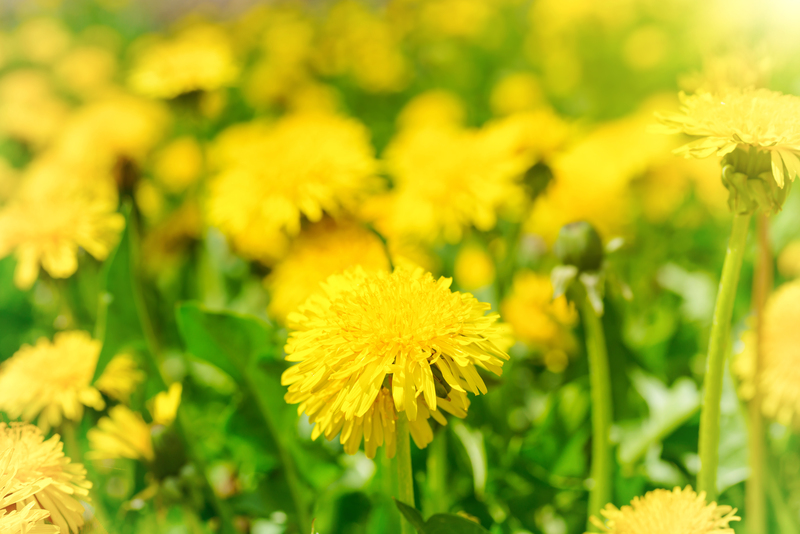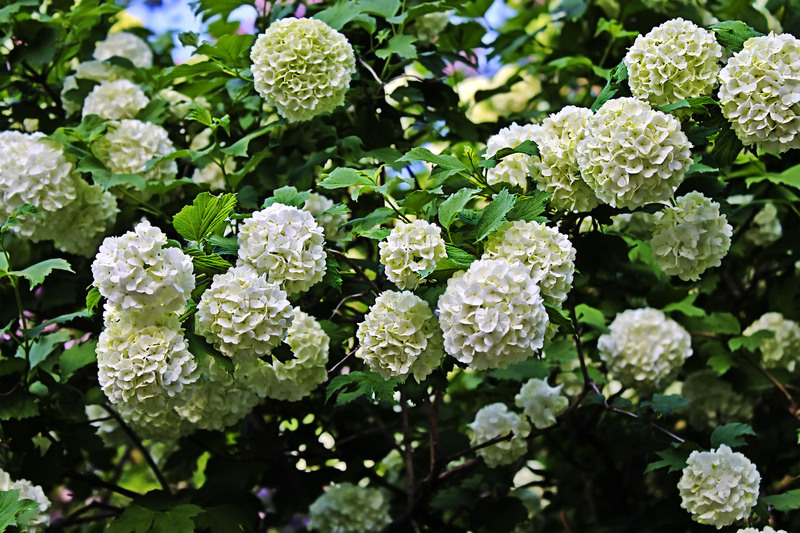The rise of container gardening: A modern green revolution
Posted on 10/11/2025
The Rise of Container Gardening: A Modern Green Revolution
In recent years, the gardening world has experienced a significant transformation. The rise of container gardening has sparked a modern green revolution, offering versatility, sustainability, and a splash of nature in urban environments. As more people seek sustainable ways to grow their own food and decorate their homes, container gardening has emerged as a popular and innovative solution.
What is Container Gardening?
Container gardening refers to the practice of growing plants--ranging from ornamental flowers to edible vegetables--in containers rather than directly in the ground. These containers can be pots, planters, buckets, or even upcycled items such as old bathtubs and crates. Container gardening breaks the traditional limitations of gardening by enabling anyone, anywhere, to cultivate a green space, regardless of available land.

The Origins and Evolution of Container Gardening
The concept of cultivating plants in containers dates back to ancient civilizations. From the hanging gardens of Babylon to potted plants in early Chinese and Roman societies, people have long appreciated the beauty and utility of container-based plant care. However, the modern green revolution in container gardening began to flourish with urbanization, technological advancements, and a growing environmental consciousness.
The Urbanization Effect
With the explosion of urban living, access to traditional gardening spaces has become limited. High-rise apartments, balconies, and rooftops have replaced sprawling yards for many. Container gardening emerged as a practical response, empowering city dwellers to cultivate urban gardens and reconnect with nature on a smaller scale.
Innovations Fueling Popularity
Modern materials such as lightweight plastics, fiberglass, and composite blends, as well as the rise of self-watering systems and vertical containers, have drastically expanded what's possible. The container gardening revolution is fueled by these innovations, which make gardening more accessible and convenient than ever before.
The Benefits of Container Gardening
- Space Efficiency: Ideal for small apartments, balconies, and patios.
- Flexibility: Containers can be easily moved and rearranged.
- Disease and Pest Control: Lower risk of infestations and contamination compared to traditional beds.
- Accessibility: Perfect for people with physical limitations or mobility issues.
- Soil and Water Management: Enhanced control over soil quality and moisture levels.
- Season Extension: Move containers indoors or to sheltered spots during extreme weather.
Container gardening is not only fun and rewarding, but also offers eco-friendly advantages--helping urban populations eat locally, reduce food miles, and foster biodiversity, even in the heart of a concrete jungle.
Types of Container Gardens
1. Edible Container Gardens
Growing herbs, vegetables, and even dwarf fruit trees in pots has become a staple of the container gardening revolution. These urban edible gardens supply fresh, organic produce and cut down on grocery bills.
2. Ornamental Container Gardens
Flowers, succulents, and decorative shrubs can be arranged in aesthetically pleasing container gardens, turning drab balconies into vibrant sanctuaries. Ornamental container gardening is ideal for expressing creativity and boosting mental well-being.
3. Indoor Container Gardens
Indoor container gardening allows year-round greenery inside the home. Popular with houseplants like snake plants, pothos, or even microgreens, these compact gardens improve indoor air quality and beautify interior spaces.
4. Vertical Container Gardens
To maximize limited space, many gardeners turn to vertical gardening systems. Stackable planters, wall-mounted pockets, and trellises enable the cultivation of a lush vertical container garden even in the smallest corners.
How to Start Your Own Container Garden
Step 1: Choose the Right Containers
Almost anything can be a container, but selecting the right type ensures healthy plant growth. Consider:
- Size: Sufficient space for root development
- Material: Terra cotta, ceramic, plastic, or fabric
- Drainage: Adequate holes to prevent waterlogging
- Portability: Lightweight options for easy movement
Step 2: Use the Proper Soil Mix
Quality soil is integral to successful container gardening. Choose a lightweight, nutrient-rich potting mix--ideally one that includes compost, perlite, and coco coir for improved drainage and water retention.
Step 3: Select Suitable Plants
Choose varieties that thrive in containers. Consider the sun, shade, and wind exposure of your space, along with the mature size of your plants. Popular options include:
- Herbs: Basil, parsley, mint, chives
- Vegetables: Tomatoes, lettuce, peppers, radishes
- Flowers: Petunias, marigolds, pansies
- Succulents: Jade, echeveria, aloe vera
- Dwarf fruit trees: Lemons, figs
Step 4: Watering and Fertilizing
Since containers dry out faster than ground beds, check moisture daily and water as needed. Use slow-release organic fertilizers or compost tea to keep plants vibrant. For best results, consider grouping containers with similar water and light needs.
Step 5: Position and Maintenance
Arrange containers to maximize their exposure to sunlight and protect from harsh elements. Regularly prune, deadhead, and inspect for pests to ensure ongoing health. Rotate containers seasonally if desired.
The Environmental Impact of Container Gardening
As part of the modern green revolution, container gardening addresses many ecological concerns:
- Reduces Urban Heat Islands: Plants in containers cool down concrete spaces and promote oxygen production.
- Conserves Water: Controlled watering in containers reduces wastage.
- Mitigates Food Miles: Homegrown produce lessens the environmental impact of transportation.
- Encourages Upcycling: Repurposing old containers decreases landfill waste.
- Fosters Native Flora: Nurturing indigenous plants supports pollinators and wildlife.
Trends Driving the Container Gardening Revolution
1. Sustainability and Eco-Conscious Living
Amid growing climate change concerns, people are turning to container gardening as a tangible, everyday way to shrink their ecological footprint. Urban container gardens offer fresh produce without pesticides or plastic packaging.
2. Digital Influence and Community Building
Social media platforms like Instagram and Pinterest have popularized stylish container arrangements and DIY tutorials, inspiring a fresh wave of gardeners. Online communities connect enthusiasts, share best practices, and offer support for container-based green living.
3. Integration with Smart Technology
The modern green revolution is intertwined with technology. Self-watering pots, app-controlled irrigation systems, and hydroponic kits have made container gardening more accessible for tech-savvy beginners and busy urbanites.
4. A Focus on Wellness
Container gardening doesn't just enrich your environment--it nurtures your well-being. Tending to plants reduces stress, boosts mood, and encourages mindfulness, making it an invaluable tool in the modern pace of life.
Common Challenges and Solutions in Container Gardening
While container gardening offers many benefits, it comes with specific challenges. Below are some common issues and how to address them:
- Overwatering: Use containers with drainage holes and monitor soil moisture to prevent root rot.
- Nutrient Deficiency: Refresh soil annually and use organic fertilizers regularly.
- Pest Control: Inspect for pests, manually remove, or use natural remedies like neem oil.
- Plant Crowding: Avoid overcrowding; use adequate-sized containers for each plant.
- Sunlight Access: Rotate containers to ensure each plant receives adequate light.

The Future of Container Gardening: Where is the Green Revolution Headed?
The container gardening movement shows no signs of slowing down. As urban populations grow, and space becomes an ever-more precious commodity, the role of container gardens in urban food security, biodiversity, and aesthetics is set to expand.
Urban Agriculture Integration
Innovative city planners are embracing container gardens for community and rooftop farms. These approaches address food deserts, create jobs, and improve urban resilience.
Education and Youth Engagement
Many schools and organizations are using portable gardens as hands-on learning tools. Teaching children about plant life cycles, sustainability, and nutrition through container gardening lays the foundation for future stewards of the earth.
Personalized Gardening Experiences
From hydroponics to artistic arrangements, future trends in container gardening will continue to emphasize customization and individual expression. New materials, eco-friendly innovations, and smart tech will further enhance the experience.
Conclusion: Join the Container Gardening Revolution
Container gardening has evolved from a practical necessity into a lifestyle choice at the heart of the modern green revolution. Whether you lack a traditional yard, seek to grow your own food, or simply wish to add life to your living space, this accessible form of gardening offers boundless opportunities.
Embrace the rise of container gardening. With a little creativity, some basic knowledge, and the willingness to get your hands dirty, anyone can contribute to a greener, more sustainable urban world. Why not begin your own container garden journey today and become a part of this blossoming green movement?
Ready to make a difference? Start small, grow big, and join the modern green revolution through container gardening.

